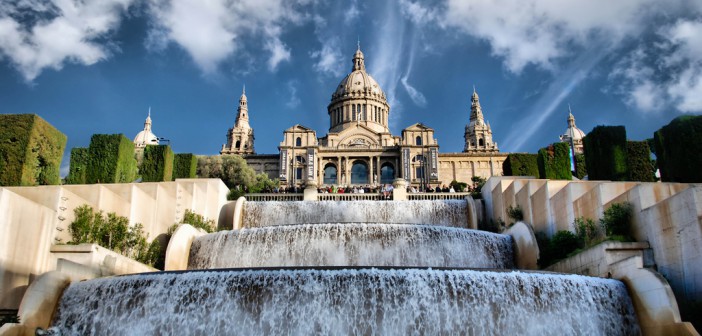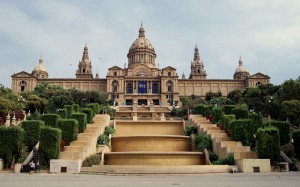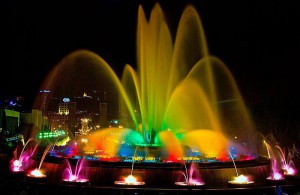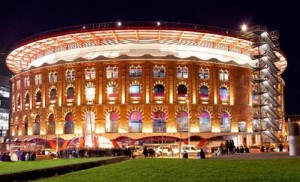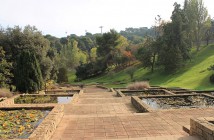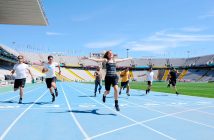Magic Fountain
Las Arenas
Montjuïc Castle
History
Sants and Montjuïc is the largest district in the city. Its territorial boundaries were established in 1984 when Barcelona was divided into 10 districts. It consists of the old District II (Montjuïc and Poble Sec) and District VII (Sants- Hostafranca- La Bordeta.)
The name Montjuïc is thought to be derived from the Catalan word `juïc´ meaning Jewish, indicating that there may have been a Jewish settlement here at one time. However, there are also speculations that it may derive from the Latin Mont Jovis (Mount of Jupiter) after the Roman God. It was used as a fort for the Madrid government during the political disturbances in 1842 and later as a political prison during the Franco era. During the Olympic Games, Montjuïc was transformed with the construction of the Olympic stadium, swimming pool, and other sports facilities.
Sants was an independent community until its annexation by Barcelona in 1897 and although it retains an industrial flavour, its proximity to the centre has pushed prices up and caused many of its traditional industries to relocate elsewhere.
Sightseeing
The Magic Fountain of Montjuïc is a must see in this neighbourhood, and has been lighting up Plaça Espanya with its colorful water and light show since 1929.
Montjuïc Castle is an old military fortress located 170 metres above sea level on Montjuïc Mountain. It was built on top of the mountain in 1640 and has since seen a many battles. Inside the castle you’ll find a large military museum that will take you through the history of the castle, it enemies and defenders. Ride a cable car to the top of the mountain for breathtaking views before you explore the castle grounds.
The Museu Nacional d’Art de Catalunya can be found in Plaça Espanya, right behind the Magic Fountain. It is home to a large collection of diverse art. You will have the opportunity to view unique and rare Romanesque mural paintings, Catalan Modernism, Gothic art, European Renaissance and Baroque paintings, along with other features in the temporary exhibitions. Entrance to the museum is free on the first Sunday of every month.
Dining & Nightlife
Tinta Roja is a soft romantic bar with a large auditorium where you can watch live tango performances while enjoying an Argentinian style cocktail. If you don’t like to watch, stop by on a Wednesday for tango lessons.
Address: Creu dels Molers, 17
El Sortidor has been serving the neighbourhood since 1908 and has managed to maintain its original character, making this a great place to stop for lunch or dinner. The restaurant serves Spanish, Catalan, and Italian dishes at unbeatable prices.
Address: Plaça del Sortidor, 5
Shopping
Las Arenas is the best place to shop in this neighbourhood. The large shopping centre was once a bull ring but was renovated in 2011 and became a huge shopping mall. On the ground floor there is a large food court and a supermarket, on the upper floors there are a multitude of typical high street fashion stores and if you go all the way to the top you will have some great views of the Sants Montjïc neighborhood.
How to get there
Sants and Montjuïc are very well linked by public transport; Sants station links Barcelona to the rest of Spain and is easy to get to on the R4 train or the L3 and L5 metro. The L1, L5 and L8 also pass through he area. The best stations for Montjuïc are Espanya or Parallel.

